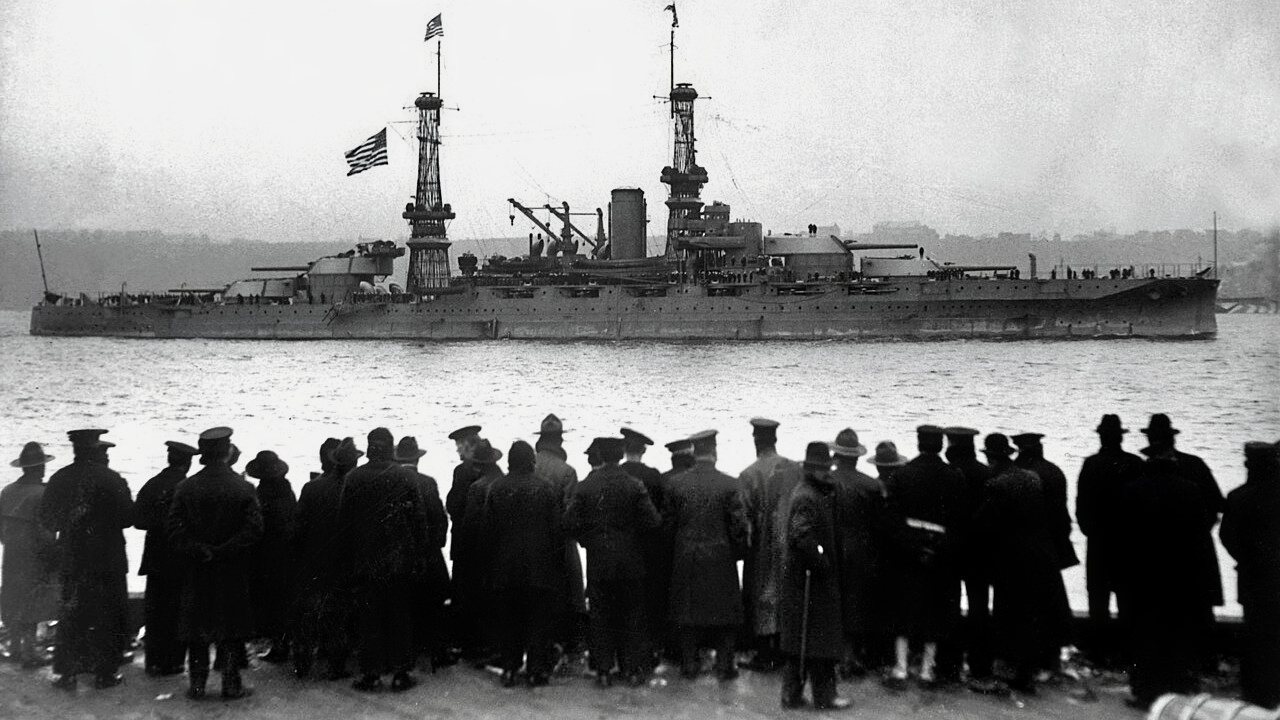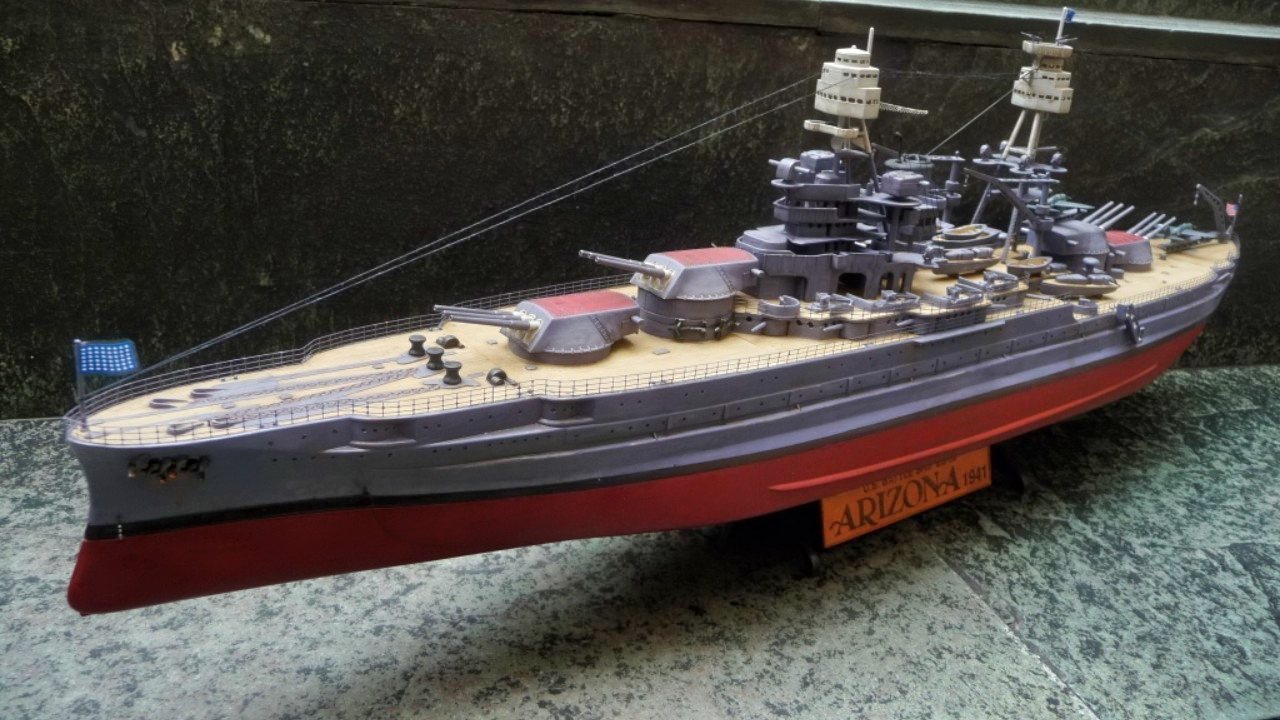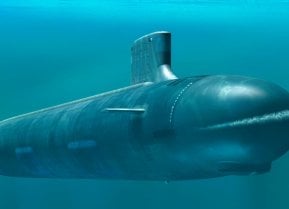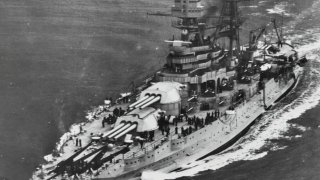EXPLAINED: How Navy Battleship USS Arizona Was Sunk at Pearl Harbor
The USS Arizona was a capable vessel, but its memory is inextricably tied to the Japanese attack on Pearl Harbor – in which the Arizona was sunk.
What You Need to Know: The USS Arizona, a Pennsylvania-class battleship commissioned in 1916, is most famously remembered for its tragic sinking during the Japanese attack on Pearl Harbor on December 7, 1941. Originally built for World War I, the Arizona served primarily in training and support roles during the interwar period before being stationed in Pearl Harbor as a deterrent against Japanese aggression.

-On the morning of December 7th, ten Japanese torpedo bombers launched from the carriers Kaga and Hiryu struck the Arizona, causing catastrophic explosions that led to the loss of 1,177 of the 1,512 crew members aboard.
-Today, the sunken Arizona serves as a solemn memorial to those who lost their lives, symbolizing the profound loss and the onset of America's involvement in World War II.
Remembering USS Arizona: The Battleship That Became a Pearl Harbor Memorial
In the US Navy’s long lineage of capable vessels, perhaps the most famous battleship ever sailed is remembered not for its accomplishments or capabilities, but for its association with one of our nation’s most tragic moments.
The USS Arizona was a capable vessel, but its memory is inextricably tied with the Japanese attack on Pearl Harbor – in which the Arizona was sunk.
The History of USS Arizona
By the time World War II started, the Arizona was already becoming somewhat dated. Built in the mid-1910s and commissioned in 1916, the Arizona was a World War I era vessel – although the Arizona did not participate in World War I (the Arizona did escort President Woodrow Wilson to the Paris Peace Conference, however).
Serving during the interwar period, the Arizona was used mostly for training missions – but did see some more high profile action. In 1919, the Arizona was deployed to oversee US interests during the Greco-Turkish War. In 1921, the Arizona was transferred to the Pacific Fleet, which she has since come to memorialize.
In 1933, the Arizona supported relief efforts after the Long Beach, California earthquake. In 1934, the Arizona made her Hollywood debut when she was featured in Here Comes the Navy starring James Cagney.
Navy sequestration in the late 1930s caused the Arizona to be docked in port for long stretches. And in 1940, the Arizona’s home port was moved from California to Pearl Harbor, Hawaii in the hopes that the battleship would serve as a deterrent to the increasingly aggressive Imperial Japan.
The Design of the Battleship Arizona
The Arizona was the second (and final) Pennsylvania-class battleship constructed. Larger than the preceding Nevada-class, the Arizona was 608 feet long with a 97 foot beam and a 29 foot draft. The Arizona displaced 29,158 long tons at standard and 31,917 at deep load. The ship sailed with 56 officers and 1,031 enlisted men.

For propulsion the Arizona relied upon four direct-drive Parsons steam turbine sets, which drove 12 foot tall propellers using steam from twelve Babcock & Wilcox boilers. The turbines were expected to produce 34,000 shaft horsepower, but during sea trials only managed to produce 33,376 horsepower – good enough for 21 knots.
For armament the Arizona carried twelve 45-caliber 14-inch guns in triple gun turrets. To defend against torpedo boats the Arizona relied upon twenty-two 51-caliber 5-inch guns mounted to the sides of the ship’s hull. For anti-aircraft defense, the Arizona relied upon four 50-caliber 3-inch guns.
The Sinking of the Arizona
On December 7th, 1941, ten Japanese Nakajima B5N2 “Kate” torpedo bombers from the aircraft carriers Kaga and Hiryu flew at an altitude of 9,800 feet and deployed 797-kilogram bombs against the Arizona. Aircraft from the Kaga bombed Arizona’s amidship to stern, while aircraft from the Hiryu struck the Arizona’s bow. The aircraft scored four direct hits (and three near misses) on the Arizona. The final hit was the most consequential, penetrating the armored deck somewhere near the forward section of the ship and managing to detonate the forward magazines. The resulting explosion was catastrophic, causing the Arizona to burn so fiercely that the interior structure of the forward portion of the ship deteriorated. The ship ultimately sunk. 1,177 of the 1,512 sailors on board at the time of the attack were lost.
Today, the Arizona sits at the bottom of Pearl Harbor as a memorial to the lives lost during the attack.
About the Author
Harrison Kass is a prolific defense writer with over 1,000 pieces posted. An attorney, pilot, guitarist, and minor pro hockey player, Harrison joined the US Air Force as a Pilot Trainee but was medically discharged. Harrison holds a BA from Lake Forest College, a JD from the University of Oregon, and an MA from New York University. Harrison listens to Dokken.
All images are Creative Commons.
From the Vault


